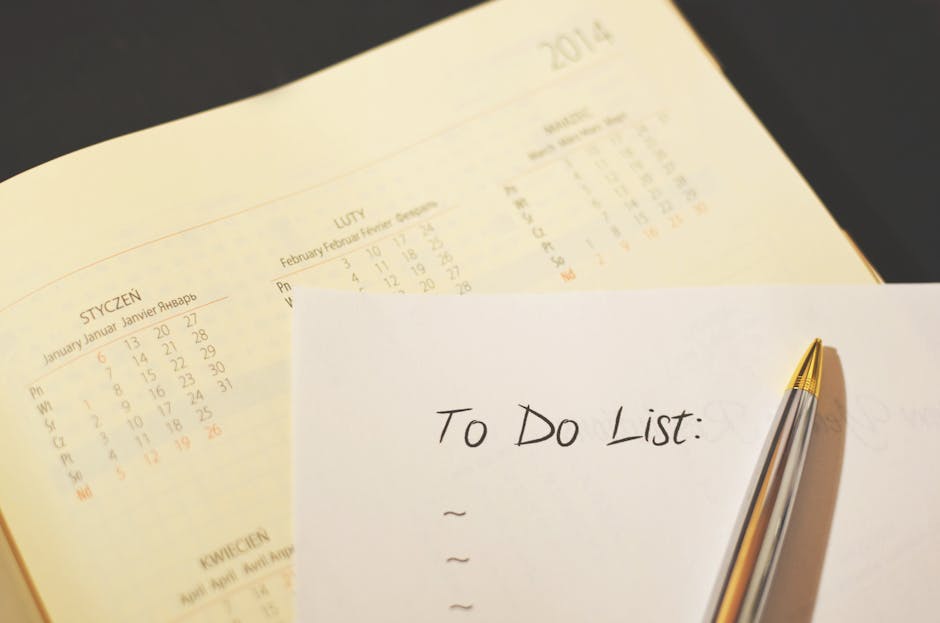My Personal Checklist for “Deep Work Readiness” Every Morning.
In a world of constant pings, notifications, and an ever-growing to-do list, finding true, uninterrupted focus feels like a superpower. For me, it’s not just a desire; it’s a non-negotiable for tackling complex tasks and making meaningful progress. I’m talking about “deep work” – the ability to focus without distraction on a cognitively demanding task. But deep work doesn’t just happen. It’s cultivated, nurtured, and most importantly, prepared for. Over the years, I’ve refined a highly personal, intentional morning ritual that serves as my launchpad into these periods of intense concentration. This isn’t about generic productivity hacks; it’s about a specific sequence of actions designed to prime my mind, body, and environment for peak performance. Think of it as my daily pre-flight check before I enter the cockpit of my workday.
Setting the Stage: My Pre-Dawn Mental Calibration
My journey to deep work readiness begins not with an alarm clock, but with an internal shift. The moment I wake up, usually before the sun makes its grand appearance, my first conscious act is to gently steer my mind away from the impending demands of the day. This isn’t about ignoring responsibilities, but rather about creating a mental buffer zone. I avoid immediately grabbing my phone to check emails or social media. That’s a surefire way to invite distraction and reactive thinking before my brain has even fully booted up.
The “No-Screen-First-Hour” Rule and Mindful Awakening
- Zero Digital Input: For the first hour, my phone remains untouched, preferably in another room. This prevents my brain from being hijacked by external agendas and allows my own thoughts to surface naturally.
- Hydration & Light: My very first physical action is to drink a large glass of water. This simple act signals to my body that it’s time to rehydrate and gently kickstart internal systems. I then step outside briefly or open a window to expose myself to natural light, even if it’s just the pre-dawn glow. This helps regulate my circadian rhythm and signals wakefulness.
- A Moment of Stillness: I dedicate 10-15 minutes to quiet reflection or a simple meditation. This isn’t about achieving enlightenment, but about acknowledging my thoughts without judgment, calming any nascent anxieties, and setting an intention for the day. It’s a mental decluttering exercise that helps me identify any underlying mental chatter that could later sabotage my focus. This practice grounds me, creating a sense of inner calm and control before the day’s tasks begin to swirl. For me, it’s about gently bringing my attention to the present moment, recognizing what’s truly important, and mentally preparing for focused effort. This initial period of mental calibration is paramount; it’s where I establish a proactive, rather than reactive, mindset.
Fueling the Machine: The Physical Rituals for Peak Morning Focus
Deep work demands significant cognitive energy. You can’t expect your brain to perform at its best if your body isn’t properly fueled and cared for. My personal checklist includes several non-negotiable physical rituals that ensure my body is ready to support sustained mental effort without interruption or discomfort.
Nutrition, Movement, and Sustained Energy Management
- Strategic Nutrition: My breakfast is designed for sustained energy, not a sugar rush and subsequent crash. This usually involves a balanced meal with complex carbohydrates, healthy fats, and protein – think oatmeal with berries and nuts, or eggs with avocado and whole-grain toast. I also prepare my coffee or tea with intention, savoring it as part of the ritual, not just a caffeine delivery system. This conscious consumption prevents me from feeling hungry or experiencing energy dips during my deep work blocks.
- Light Physical Activity: Before settling down, I engage in 20-30 minutes of light exercise. This could be a brisk walk, a yoga flow, or some bodyweight exercises. The goal isn’t an intense workout, but rather to get my blood flowing, oxygenate my brain, and release any lingering physical tension. This movement acts as a natural energy booster and mental clarifier. It helps shake off any morning grogginess and prepares my body to sit comfortably and attentively for extended periods.
- Hydration Throughout: I make sure to have a full water bottle at my desk before I even sit down. Constant, easy access to water means I won’t break my focus later to go get a drink. It’s a small detail, but it eliminates a potential distraction and supports optimal brain function.
Fortifying the Fortress: Crafting My Distraction-Proof Workspace
Once my mind and body are adequately primed, my attention shifts to my immediate physical surroundings. A chaotic or unoptimized workspace is an open invitation for distraction. My personal checklist for deep work readiness includes a rigorous physical “fortification” process for my workspace, ensuring it serves as a sanctuary for focus.
Environmental Control and Visual Clarity
- The “Clean Slate” Principle: Every evening, I make it a point to clear my desk, putting away anything not directly related to the next day’s deep work. This means when I approach my workspace in the morning, it’s a clean slate. There are no lingering papers from yesterday, no random mugs, no visual clutter to pull my attention away. The less visual information vying for my attention, the easier it is for my mind to settle on the task at hand.
- Essential Tools Only: Before I begin, I gather only the tools absolutely necessary for my first deep work block. This might include a specific notebook, a pen, my water bottle, and my noise-canceling headphones. Anything else is kept out of sight. This minimizes decision fatigue and eliminates the temptation to pick up or fiddle with extraneous items.
- Sound & Light Management: I ensure my environment is conducive to concentration. This means closing doors, pulling down blinds if external visual distractions are present, and putting on my noise-canceling headphones (even if there’s no noise, they serve as a psychological barrier). Sometimes, I’ll put on instrumental focus music, but only if it’s genuinely non-distracting. The goal is to create a sensory bubble where only my work exists.
Digital Declutter & Deep Dive Prep: My Tech-Taming Tactics
In today’s digital age, our devices are often the biggest culprits of shattered focus. My deep work readiness checklist wouldn’t be complete without a robust strategy for taming technology and preparing my digital landscape for uninterrupted concentration. This goes beyond simply turning off notifications; it’s about creating an intentional digital environment.
Pre-emptive Digital Hygiene and Task Alignment
- The “Digital Drawbridge”: Before I even open my primary work application, I close all unnecessary tabs and applications. This includes email clients, messaging apps, social media, and anything not directly relevant to the deep work task. My goal is a single-minded digital interface.
- Notifications Off (Truly Off): On my computer and phone, all non-essential notifications are not just muted, but often completely turned off for the duration of my deep work block. This includes email alerts, Slack messages, news updates, and even calendar reminders that aren’t critical. I establish a clear expectation that I am unavailable for immediate digital responses during this time.
- Task Specificity & “To-Do” Alignment: Before I start, I clearly define the single most important deep work task I will tackle. I open only the files or programs absolutely required for that task. This clarity prevents me from aimlessly browsing or getting sidetracked by other digital items. I also make sure I have my daily focus list ready, so there’s no ambiguity about what I need to accomplish.
The Final Mental Lock-In: My Pre-Deep Work Mindset Shift
Even with my body fueled, my environment pristine, and my digital world silenced, there’s one final, crucial step on my personal checklist: a deliberate mental shift. This is where I transition from readiness to active engagement, signaling to my brain that it’s time to dive deep.

Intentional Transition and Commitment Rituals
- The “Five-Minute Pre-Game”: Before I officially start, I spend about five minutes reviewing my chosen deep work task. I visualize the first few steps, anticipate potential challenges, and mentally rehearse how I’ll approach them. This mental walkthrough reduces friction when I actually begin and helps me get into a flow state faster. I might also take a few deep breaths to center myself.
- Setting a Clear “Stop Time”: I decide on a specific duration for my deep work block (e.g., 90 minutes, 120 minutes) and commit to it. Knowing there’s an end point helps maintain focus and prevents burnout. I use a simple timer, often an analog one, to mark this period. This creates a psychological container for my work.
- A Ritualistic Start: This is often as simple as putting


